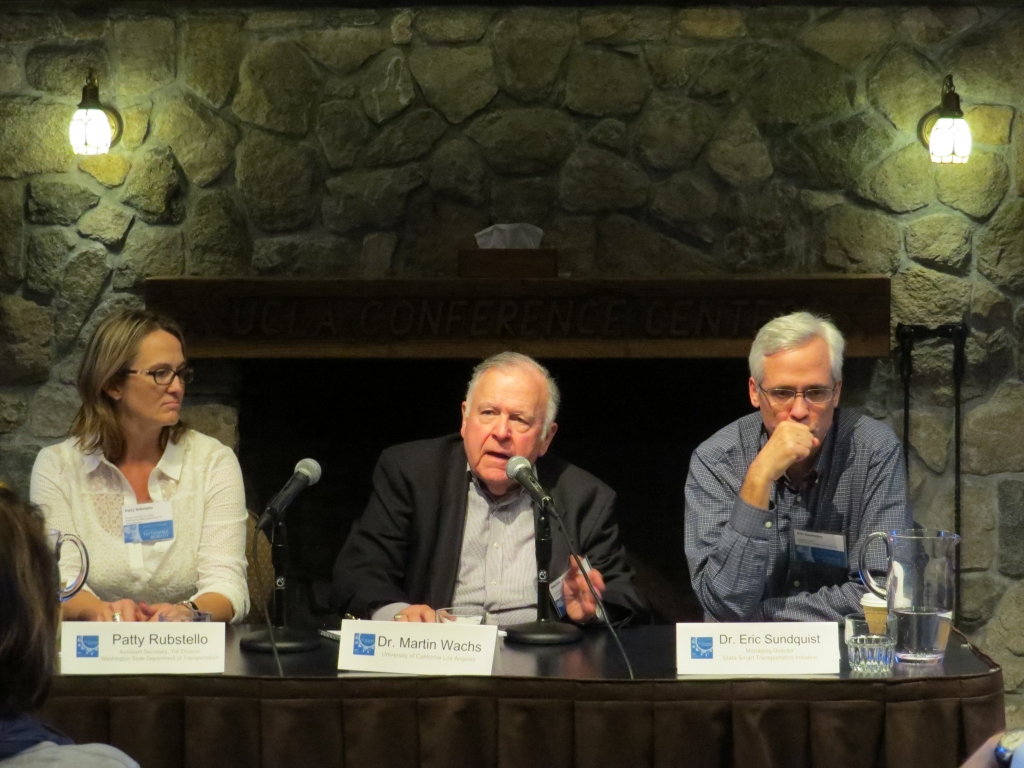Traffic congestion is a condition that Los Angeles residents know all too well. But how do we fix traffic? The speakers from Sunday afternoon’s panel offered sustainable and cost-effective solutions, including pricing, policy, and technological solutions, to add capacity to our roads without adding more concrete.
The highlight of the session was the study on California’s Road User Charge Pilot Program, discussed by UCLA Professor Emeritus Martin Wachs. Infrastructure is aging, while the funding to maintain infrastructure is shrinking. Revenue from gas tax has declined due to the increasing fuel-efficiency of cars. Road-user charges offer a new revenue source for the state to fund infrastructure improvements. The California Road User Charge program replaces the current gas tax, in which drivers pay a tax on each gallon of fuel they purchase, with a road-user charge based on Vehicle Miles Traveled (VMT). There are approximately 5000 participating vehicles statewide with a 9-month long demonstration. Interestingly, those who have the most efficient cars (such as electric vehicles and hybrid cars) make up a majority of the volunteer participants of this program. This finding indicates a promising future and viability for the program because it shows people (even those who might end up paying more under this program) are receptive to this idea.
Wachs mentioned that there is potential for the technology of this program to merge with road-tolling systems or incorporate itself into transactions made at gas stations. Ultimately, he concluded, there is hope that this program could result in a more equitable and efficient use of roads, as peak-hour road use would cost more and the use of costlier roads would be more expensive.
Patty Rubstello of the Washington State DOT spoke about using roadway tolling to increase effective capacity. She discussed I-405 in Washington, which contains 17 miles of express toll lanes between downtown Bellevue and SR 522, as a case study. The revenue of $10.56 million generated from the express toll lanes was well beyond the initial estimate of $3.14 million (from its launch in September 2015 through May 2016). The revenue generated was enough to fund corridor improvements, and Rubstello ended with her thoughts on the future of tolling, saying that the technology would keep evolving and that we must continue to learn. The future of tolling should also be open to technological innovation, she said. A simple-to-use and comprehensible system is necessary for the future of road-user charges.
Finally, Eric Sundquist of the State Smart Transportation Initiative discussed how we can evaluate accessibility (ease of reaching destinations) and trip-making (actual use of the system to reach destinations) to provide more efficient access to destinations without new road construction. He summarized the case studies on accessibility and trip-making in a few major U.S. cities and found that short trips are often not connected to the local network. Sundquist emphasized the need to locate accessibility barriers throughout cities, set standards and nomenclature around accessibility and mobility, and provide a network that can truly connect people to where they are going.
In short, building more roads is far from the only way to add capacity to our road system. As discussed by the panelists in this session, there are in fact far more sustainable and cost-effective ways to approach the traffic congestion problems that many cities face.
